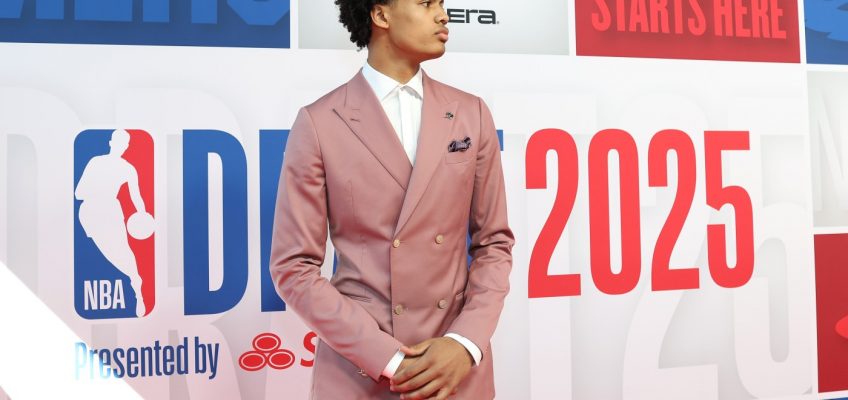By ERIC TUCKER
WASHINGTON (AP) — FBI Director Kash Patel pledged at his confirmation hearing that the bureau would not look backward, but the Trump administration’s fresh scrutiny of the Russia investigation has brought back into focus a years-old inquiry that continues to infuriate the Republican president.
George Mason University faces investigation in Trump administration’s anti-DEI crackdown
Brazil vows retaliatory tariffs against US if Trump follows through on 50% import taxes
CDC finds nearly 1 in 3 US youth have prediabetes, but experts question scant data
What’s next for President Donald Trump’s birthright citizenship order in the courts
White House budget director accuses Fed chair of violating building rules in renovation
The Justice Department appeared to acknowledge in an unusual statement this week the existence of investigations into two central players from that saga, former FBI Director James Comey and former CIA Director John Brennan, amid a new report revisiting a 2017 intelligence community assessment on Russian election interference.
That the Russia investigation, which shadowed President Donald Trump through his first term, would resurface is hardly surprising given Trump’s lingering ire over the inquiry and because longtime allies, including Patel and current CIA Director John Ratcliffe, now lead the same agencies whose actions they once lambasted. Whether anything new will be found is unclear in light of the numerous prior reviews on the subject, but Trump has long called for investigations into Comey and Brennan, and Patel — in his memoir — placed them on a list of “members of the Executive Branch Deep State” deserving of derision.
“The conduct at issue or alleged conduct at issue has been the subject of numerous other investigations — IG investigations, special counsel investigations, other internal investigations, congressional investigations. And none of those past investigations turned up any evidence that led to criminal charges against any senior officials,” said Greg Brower, a former FBI senior executive and ex-U. S. attorney in Nevada.
Word of the inquiry came as FBI and Justice Department leaders scramble to turn the page from mounting criticism from prominent conservatives for failing to release much-hyped files from the Jeffrey Epstein sex trafficking investigation. And as federal investigators have taken steps to examine the actions of other perceived adversaries of the administration, fueling concerns that the administration is weaponizing the criminal justice system for partisan purposes.
At issue now is a newly declassified CIA report, ordered by Ratcliffe, that faults Brennan’s oversight of a 2017 intelligence community assessment that found that Russia interfered in the 2016 presidential election because Russian President Vladimir Putin aspired to see Trump beat Democratic opponent Hillary Rodham Clinton.
The report does not challenge that conclusion but chides Brennan for the fact that a classified version of the intelligence assessment included a two-page summary of the so-called “Steele dossier,” a compilation of opposition research from a former British spy that included salacious and uncorroborated rumors about Trump’s ties to Russia.
Brennan testified to Congress, and also wrote in his memoir, that he was opposed to citing the dossier in the intelligence assessment since neither its substance nor sources had been validated. He has said it was included at the FBI’s urging.
But the new report casts Brennan’s views in a different light, asserting that he “showed a preference for narrative consistency over analytical soundness” and brushed aside concerns over the dossier because of its “conformity with existing theories.” It quotes him, without context, as having written that “my bottomline is that I believe that the information warrants inclusion in the report.”
Fox News reported Tuesday evening that the FBI had begun investigating Brennan for potentially making false statements to Congress as well as Comey, though the basis for that inquiry is unclear. A person familiar with the matter confirmed to The Associated Press that Ratcliffe, a staunch Trump defender and vocal critic of the Russia investigation, had referred Brennan to the FBI for possible investigation.
The person spoke on condition of anonymity to discuss a referral that has not been made public.
A Justice Department spokesperson issued a statement Wednesday referencing, without elaboration, the “criminal investigations” of Brennan and Comey, saying the department did not comment on “ongoing investigations.” It was not clear if the statement also referred to the continued scrutiny of Comey over the Instagram post. The FBI declined to comment.
Representatives for the men declined to comment this week, though Brennan said in an MSNBC interview on Wednesday that he had not been contacted by the FBI and knew nothing about an inquiry. He said he remained proud of the work intelligence agencies did to examine Russian interference in the 2016 election.
“I think this is unfortunately a very sad and tragic example of the continued politicization of the intelligence community, of the national security process,” Brennan said. “And quite frankly, I’m really shocked that individuals who are willing to sacrifice their reputations, their credibility, their decency to continue to do Donald Trump’s bidding on something that is clearly just politically based.”
A lengthy investigation by former special counsel John Durham that reviewed the intelligence community assessment as well as the broader Russia investigation did not find fault with Brennan.
FILE – Former Director of the Federal Bureau of Investigation James Comey speaks at Harvard University’s Institute of Politics’ JFK Jr. Forum in Cambridge, Mass., Feb. 24, 2020. (AP Photo/Charles Krupa, File)
Comey has separately been interviewed by the Secret Service after a social media post that Republicans insisted was a call for violence against Trump. Comey has said he did not mean the Instagram post as a threat and removed it as soon as he realized it was being interpreted that way.
The Justice Department has taken steps in recent months to scrutinize other people out of favor with Trump opening inquiries into whether former New York Gov. Andrew Cuomo lied to Congress about his state’s response to the coronavirus pandemic and into whether New York Attorney General Letitia James, who has sued Trump and his company, engaged in mortgage fraud. Both have vigorously denied wrongdoing. In other instances, the Justice Department has been directed by Trump to examine the actions of ex-government officials who have criticized him.
At the same time, the department refrained from opening an investigation into administration officials who disclosed sensitive military plans on a Signal chat that mistakenly included a journalist.
“Donald Trump is not interested in justice — he’s interested in settling scores and he views the vast prosecutorial powers of the Department of Justice as a way to do that,” said Liz Oyer, who was fired in March as the Justice Department’s pardon attorney after she says she refused to endorse restoring the gun rights of actor Mel Gibson.
Associated Press writer Alanna Durkin Richer in Washington contributed to this report.




